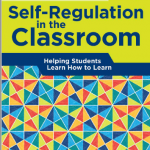Some teachers say that class size is everything. What if I told you that my #FirstDays with extra students have been totally AWESOME?!? Don’t stop reading. I’m not crazy. I’ll tell you why extra typical peers in my developmental preschool class are creating very positive outcomes.
First, a little background knowledge: “Typical peers” are preschool-aged children who are developing without any special education delays. In my district, typical peers enroll to attend developmental preschool alongside students with special needs. The official term for this inclusion model is reverse mainstreaming. Instead of the traditional model of mainstreaming special education students into regular education classes, this model includes typically developing students in special education classes.
Extensive research supports the benefits of reverse mainstreaming for both typically developing students and special education students. Typically developing students make similar developmental gains in special education settings when compared to their gains in regular education settings. They also gain benefits like leadership skills, empathy, and diversity awareness. Students with special needs benefit from typical peer models to improve their development, especially in the areas of language and communication. Essentially, reverse mainstreaming in preschool is a win-win from every angle.
My classroom observations over the past four years in my district confirm all these things to be true. Let me tell you, all my students are winning!
I started this school year with a “full” morning class of 15 students, 6 of which are typical peers. It’s the largest class I’ve ever had in Developmental Preschool and the highest ratio of typical peers. I wondered if we might have a rough start learning routines since many students are young and have not had previous school experiences. Instead, our first week was amazing from Day 1, and our second week quickly settled into a productive mid-year hum. The kids are following directions, playing well together, and making good effort to participate in learning experiences. Where am I? (I’ve wondered a few times) I think typical peers make all the difference, and I love it when visiting staff cannot tell the difference between my “typicals” and my students on IEPs.
Last year, I had a class with four typical peers. They all enrolled mid-year and I remember feeling the positive bump in classroom participation, social skills, and communication right away. Then, there was a day when they were all absent. I remember that day vividly. I was leading a whole group activity to the (figurative) sound of crickets chirping. This caused me some reflection: Were the typical kids the only ones who normally participated? No, I had solid evidence that my special needs students were participating during activities. So why had participation changed so much with students absent? I realized that my typical peers were providing important thinking/processing time and context for conversations that paved the way for my special needs students to join in. #Mindblown. That day was powerful for me, strongly reinforcing my commitment to typical peer recruitment.
I think my district has some brave and innovative typical peer practices that I want to share with you. First, the tuition is dramatically low at $175/month (4-day rate). This low cost provides amazing value to families. Second, the district reinvests the typical peer money straight back into preschool. I have my own classroom budget to purchase daily snacks and learning materials that align with student needs and interests. Totally amazing. Third, the district created a scholarship program based on financial need to fill under-enrolled typical peer programs. This has been a big help filling spots in my class. Fourth, the district is on a steady path to achieve a ratio of 50/50 for typical peers and special education preschool students in coming years. I am so impressed with this leadership decision (credited to DVUSD Deputy Superintendent Dr. Gayle Galligan and Early Childhood Manager Janet Zeek) because it represents a commitment to research-based, best practices for kids. Each year, they increase the allowed number of typical peers by one student. Since I started in 2016, the number has grown from four typical peers in a class to six. Have these innovative practices made a difference for my students? Absolutely yes. Our programs are thriving, and I feel that all my students have the opportunity for an extraordinary preschool experience that prepares them for kindergarten.
If you are trying to grow typical peer enrollment in your classroom, I have some tips from my journey. First, I found it useful to create a typical peer page on my classroom website to easily share on social media platforms including Twitter, Facebook, Next Door, and Remind. I asked my school to run messages on our school marquee and PTSA newsletter, printed flyers for our front desk, and handed out flyers at school-wide events. I also ask parents to tell their friends. Overall, I have learned that it takes time to grow a reputation and get others involved in the cause. This year, I was overjoyed when the administrative secretary approached me with her idea to send a typical peer flyer to the whole school with back our school forms. After four years of advocacy, I am seeing the benefits. In 2016-17, I could only find two typical peers to attend my class. This year, I have nine so far (and counting!)
If you are committed to an important cause in your school, keep going! My #FirstDays of school have been a clear confirmation that the efforts eventually pay off! Please share your own stories and tips in the comments below!
Also, check out the recent AZK12 Center 3 P’s in a Pod episode about #FirstDays of school.
Image credit: https://pixabay.com/illustrations/children-silhouette-cheers-forward-725141/










Comments 6
Great read Jess! I love this model of having typical and special needs children together. In a toddler music class several years ago I had 2 special needs students and 10 typical students, of those about 6 were English Language Learners. It was an AMAZING experience in seeing each other’s humanity and not our labels!
Hi Jess,
Thanks for sharing this piece. Love that you have typical peers that reverse mainstream in with your special needs scholars. We have several self contained classes on our campus that would benefit from this strategy. It is so important that thinking and processing is modeled by peers and scholars are having conversations with other peers and not just staff. Can’t wait to hear what the rest of your year brings.
Jess, thank you for sharing this! I have never heard of reverse mainstreaming before. It makes sense though. Too often, we assume that the underdeveloped or lower-performing students can drag the others down. However, we fail to realize that the other students can help pull everyone up. I saw this in action when I was the gifted cluster for my grade level. I had all of the classified gifted students plus a group of average performing students. At the end of each year, these average performing students had made more growth than the other average performing students in other classrooms. This was accredited to the gifted students creating a balloon effect and pulling these kids up at a higher rate. Role models are important.
Jess, I saw the ad for the pre-school and I was curious. I am so happy you posted this so I learned more. We have seen so many benefits from our pre-school program and this is an encouraging model. I will be sharing this blog with others. Please keep us updated!
I am so very impressed by the level of support your district is offering you, and of course, your students. I started my educational career as a parapro in a preschool classroom for students with Autism. When you mentioned the “positive bump in classroom participation, social skills, and communication” I immediately thought back to those students in that preschool classroom (some of whom I’ve been lucky enough to see again as high schoolers). How might those students have benefitted from a similar experience? LOVE that you can see those benefits first hand!
I had a student reversed mainstreamed into my classroom the last two years and it was amazing to see his growth along with my other students. the nest part was the friendship that developed between the typical developing student and the the students with multiple disabilities!